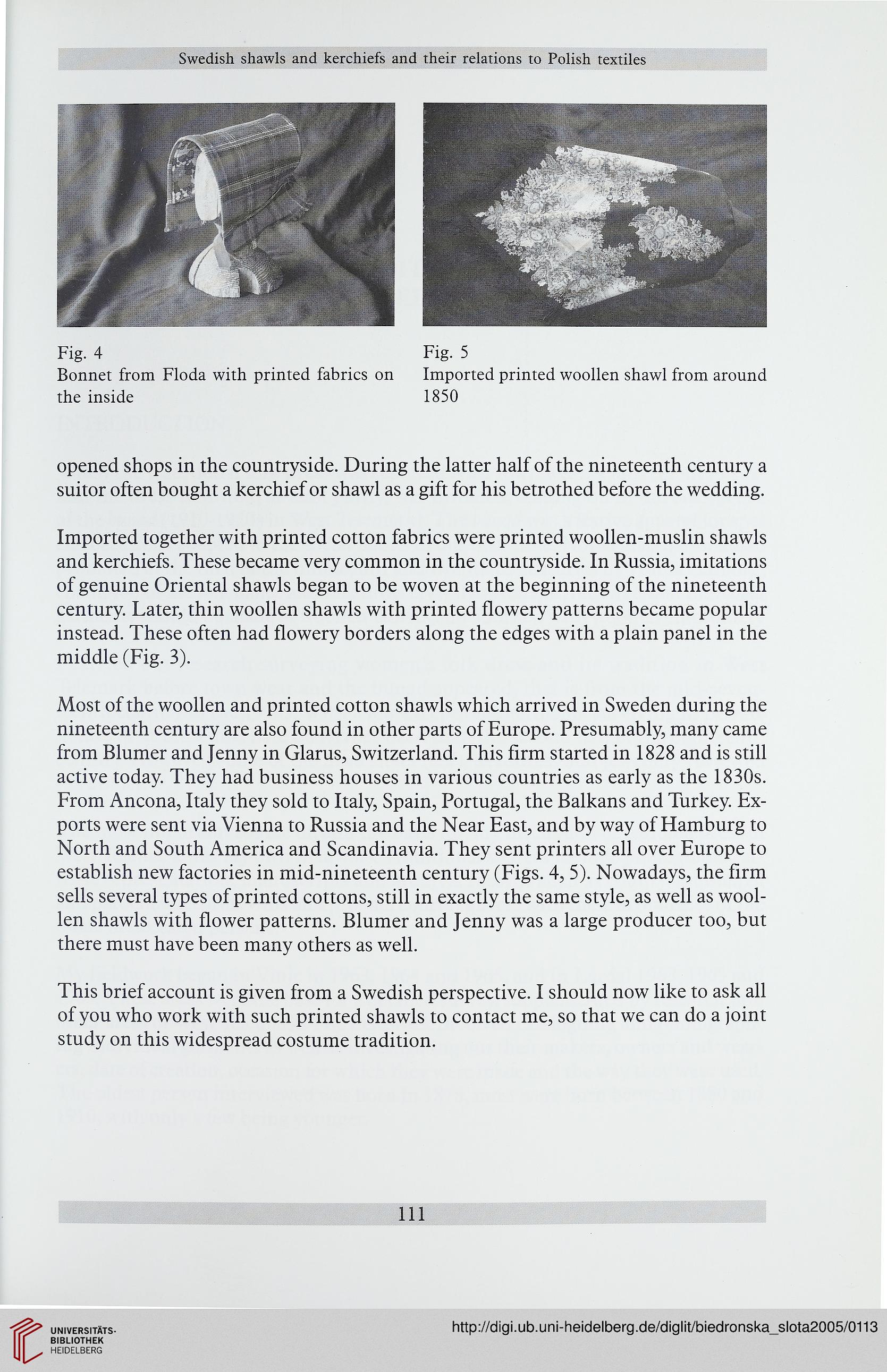Swedish shawls and kerchiefs and their relations to Polish textiles
opened shops in the countryside. During the latter half of the nineteenth cen tury a
suitor often bought a kerchief or shawl as a gift for his betrothed before the wedding.
Imported together with printed cotton fabrics were printed woollen-muslin shawls
and kerchiefs. These became very common in the countryside. In Russia, imitations
of genuine Oriental shawls began to be woven at the beginning of the nineteenth
century. Later, thin woollen shawls with printed flowery patterns became popular
instead. These often had flowery borders along the edges with a plain panel in the
middle (Fig. 3).
Most of the woollen and printed cotton shawls which arrived in Sweden during the
nineteenth century are also found in other parts of Europę. Presumably, many came
from Blumer and Jenny in Glarus, Switzerland. This firm started in 1828 and is still
active today. They had business houses in various countries as early as the 1830s.
From Ancona, Italy they sold to Italy, Spain, Portugal, the Balkans and Turkey. Ex-
ports were sent via Vienna to Russia and the Near East, and by way of Hamburg to
North and South America and Scandinavia. They sent printers all over Europę to
establish new factories in mid-nineteenth century (Figs. 4, 5). Nowadays, the firm
sells several types of printed cottons, still in exactly the same style, as well as wool-
len shawls with flower patterns. Blumer and Jenny was a large producer too, but
there must have been many others as well.
This brief account is given from a Swedish perspective. I should now like to ask all
of you who work with such printed shawls to contact me, so that we can do a joint
study on this widespread costume tradition.
opened shops in the countryside. During the latter half of the nineteenth cen tury a
suitor often bought a kerchief or shawl as a gift for his betrothed before the wedding.
Imported together with printed cotton fabrics were printed woollen-muslin shawls
and kerchiefs. These became very common in the countryside. In Russia, imitations
of genuine Oriental shawls began to be woven at the beginning of the nineteenth
century. Later, thin woollen shawls with printed flowery patterns became popular
instead. These often had flowery borders along the edges with a plain panel in the
middle (Fig. 3).
Most of the woollen and printed cotton shawls which arrived in Sweden during the
nineteenth century are also found in other parts of Europę. Presumably, many came
from Blumer and Jenny in Glarus, Switzerland. This firm started in 1828 and is still
active today. They had business houses in various countries as early as the 1830s.
From Ancona, Italy they sold to Italy, Spain, Portugal, the Balkans and Turkey. Ex-
ports were sent via Vienna to Russia and the Near East, and by way of Hamburg to
North and South America and Scandinavia. They sent printers all over Europę to
establish new factories in mid-nineteenth century (Figs. 4, 5). Nowadays, the firm
sells several types of printed cottons, still in exactly the same style, as well as wool-
len shawls with flower patterns. Blumer and Jenny was a large producer too, but
there must have been many others as well.
This brief account is given from a Swedish perspective. I should now like to ask all
of you who work with such printed shawls to contact me, so that we can do a joint
study on this widespread costume tradition.




